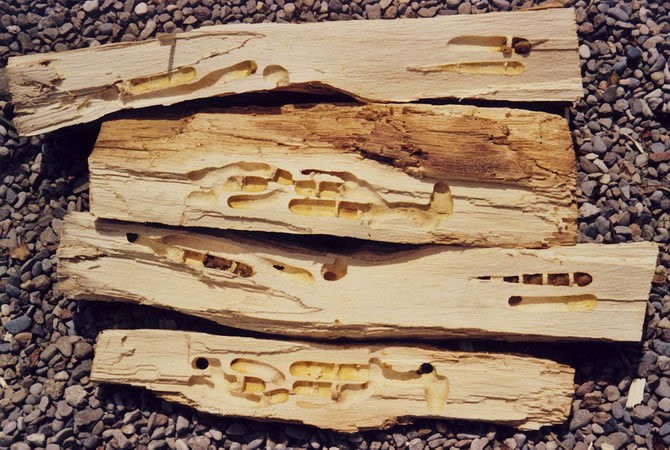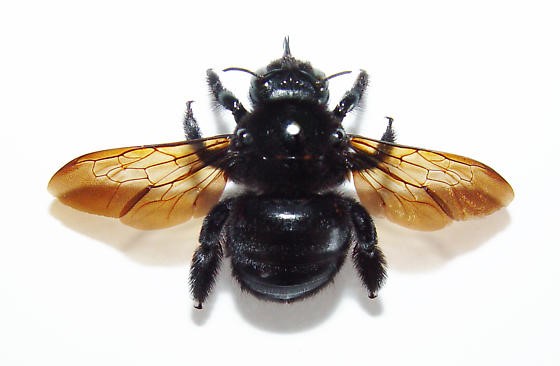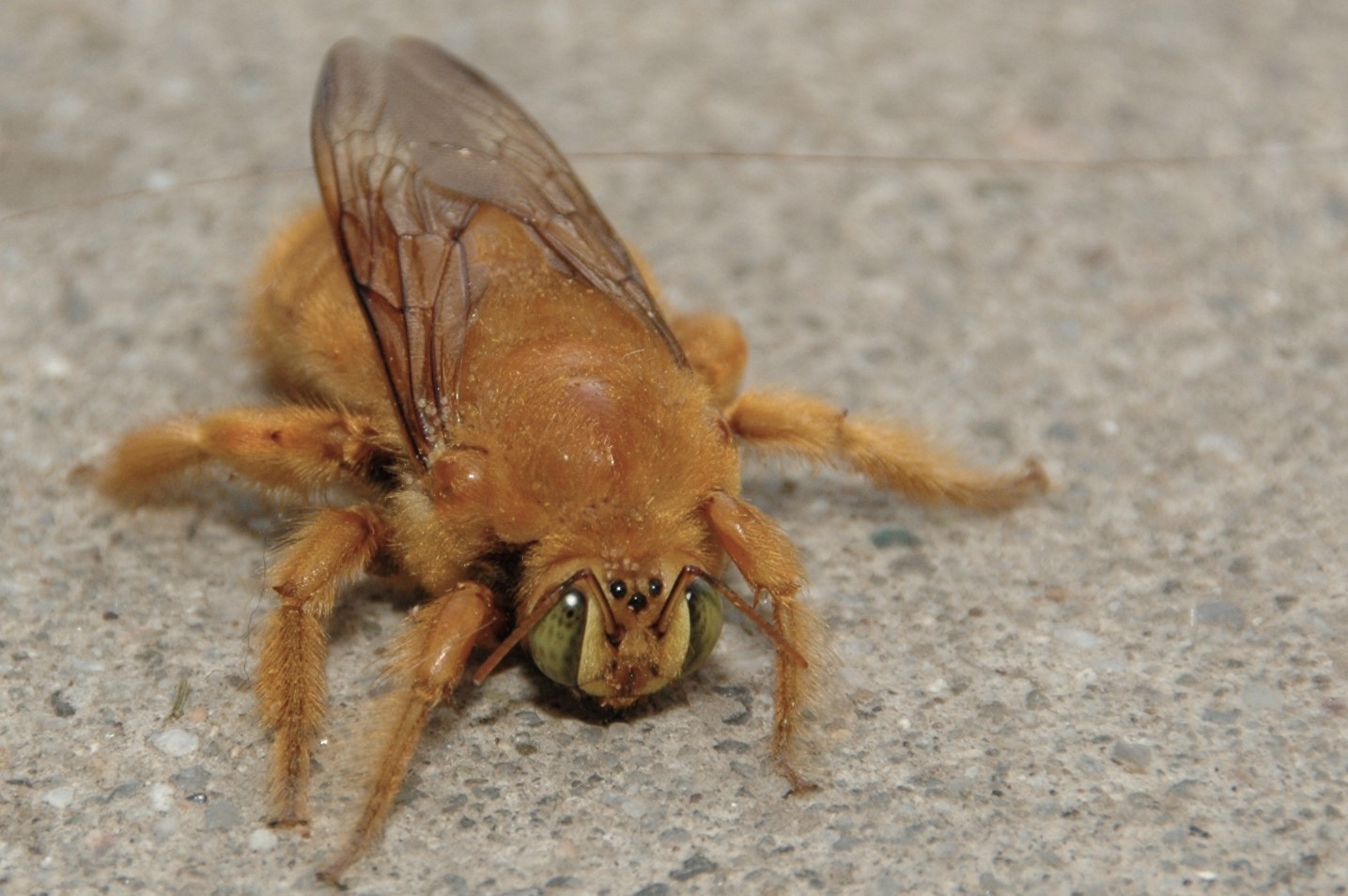Form and Function
Don’t Call This Carpenter for a Quote
Xylocopa varipuncta, otherwise known as the Valley Carpenter Bee, covers many
unique adaptions only exhibited in carpenter bees. To begin with, the term “carpenter bee”
often associated with genus Xylocopa, refers to the species tendency to nest by burrowing into
wood (Nickerson 2001). They mine through logs using their wide,
powerful mandibles or jaws
wide,
powerful mandibles or jaws
(U.S. Forest Service 2013).
Contrary from many other
bees’ habitats, X. varipuncta
typically prefers to tunnel
into weathered softwoods
such as pine, cedar, and
redwood, rather than
burrowing in the ground or
creating a traditional tree
hanging hive (Nickerson 2001). For more information on habitat click here. This attraction to a
timbered habitat brings these bees into a closer relationship with humans (University of
Kentucky Entomology 2002). Albeit not always a healthy one as “eaves, window trim, facia
boards, siding, wooden shakes, decks and outdoor furniture” become primary living habitats
(University of Kentucky Entomology 2002).
Who Said Bees Could Fly?
As with being a member from the “Bee” family, X. varipuncta’s main source of motility
is from its wings (Nickerson 2001). Using its wings, the Valley Carpenter Bee can effectively find
mates for reproduction, locate and then construct potential nests, patrol guarded territories, and
collect food (Choe 2007). The flight possibility of bees has long been a question for scientists. The
motives for evolutional development of wings are clear, but not until only recently has the odd
phenomena been solved. Scientists have analyzed hours of bee flight, and have discovered that
larger bees such as X. varipuncta, flap their wings roughly 230 times per second (Live Science
2006). This number surprised many scientists because it was faster than smaller insects, which
totaled at 200 times per second (Live Science 2006). Generally, as insect species get smaller,
they flap their wings faster to make up for the decline in aerodynamic function. (Hurd
1995).
The Gentle Giant
With an average Adult body length of 1/2-1" (12.5-25 mm), X. varipuncta is
considered one of the largest bees in the United States next to Queen Bumble Bees (Green
living quarters warrant burrowing
into wood, a smaller size
would appear to be more efficient,
so it is strange that in this case,
that notion is reversed (Hurd).
Aside from lacking hair at the
abdomen, X. varipuncta closely
resembles the bumble bee
(Nickerson 2001). It has apical
spurs, a trait that features short hairs on the ventral surface of an Arthropods tibia, as well as a
“2nd sub-marginal triangular cell in its two front wings, and a small jugal lobe in each of its hind
wings” (Green Valley pc 2007).
Males and Females
Similar to many other organisms on the planet, there are some substantial differences
in gender. Male X. varipuncta exhibit a golden hue to their bodies with green eyes (Hurd 1995).
A common nick name “Teddy Bears”, has been given to the male Valley Carpenter bees based on
the many calls Entomologist receive about “golden bumble bees?” (University of California
Cooperative Extension 2011). Often times when humans approach, aggressive behaviors are
produced
by male X. varipuncta, however, because this species is extremely
territorial, it is
merely trying to
protect its nest (Hurd
1995). Behaviors that
are documented often
consist of directly
flying and/or hovering
in front of ones face
(Penn State College of
Agricultural Sciences
2003). If these
behaviors intrigue
you, click here to learn more about species interactions. The catch, males have no stinger so
these displays are completely based on intimidation. Be wary, the beautiful black metallic
colored females do indeed have stingers, but will only use them upon extreme provocation
(Nickerson 2001).
Want to learn more?
Click here to read more about reproduction and life history.
To navigate back to the home page click here.

